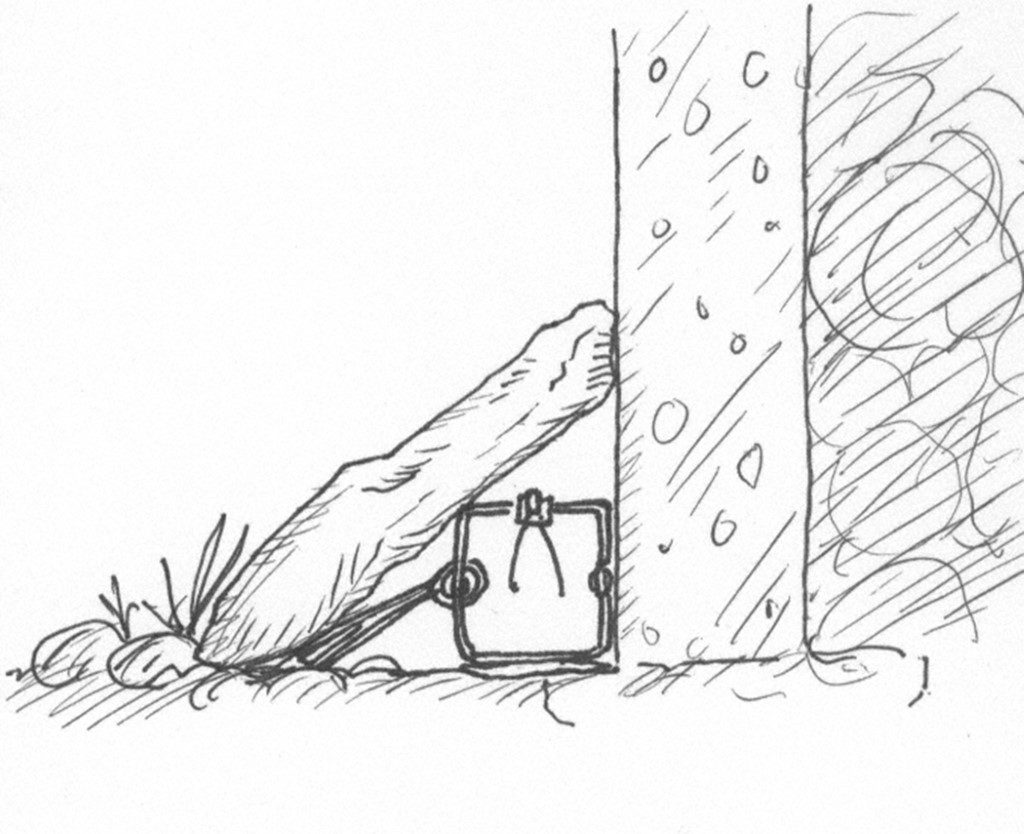Identification | Biology | Damage ID | Management | Handling
Overview of Damage Prevention
and Control Methods
Habitat Modification
- Eliminate potential denning areas
Exclusion
- Seal openings around domestic animals
- Poultry netting
Frightening
- None are effective.
Repellents
- None are available.
Toxicants
- None are available.
Shooting
- Difficult; consult state laws on shooting mink.
Trapping
- Single-door cage/box traps
- Foothold traps
- Pocket set
Damage Prevention and Control Methods
Habitat Modification
Habitat modification generally is not a feasible means of reducing mink predation problems on farms. If the objective is to increase natural production of upland nesting wild birds, however, habitat modification may be applicable. The best method of increasing upland nesting success is usually to increase the size and quality of cover areas such as grasslands, legumes, or set-aside areas. Although increasing the density of nesting cover may reduce nest predation by mink, it could lead to an increase in nest predation by species that favor dense cover, such as the Franklin ground squirrel. Because mink frequently use multiple den sites, elimination of potential denning areas may reduce their densities.
Exclusion
Usually the best solution to mink predation on domestic animals is to physically exclude their entry, sealing all openings larger than 1 inch with wood or tin and by using 1-inch mesh poultry netting around chicken yards and over ventilation openings. Mink do not gnaw like rodents, but they are able to use burrows or gnawed openings made by rats.
Frightening Devices
None have been found to be effective.
Repellents
None are available.
Toxicants
None are available.
Shooting
Some states may have restrictions on shooting mink, although many will make exceptions in damage situations. If a mink is raiding poultry and can be caught in the act, shooting the animal is a quick way to solve the problem. Normally, though, it is difficult to shoot mink because of their nocturnal habits.
Trapping
Mink are suspicious of new objects and are difficult to capture in cage/box traps. Single-door cage/box traps may be effective if baited and placed in dirt banks or rock walls prior to being set to make mink comfortable with their presence. Double-door cage traps can be effective in runways, particularly if the trap doors are wired open and the trap is left in place for some time before activating the trap. Cage traps may also be effective around farmyards because mink are more accustomed to encountering human-made objects in those areas. Use cage or box traps around a farmyard if there is a high likelihood of catching pets. Otherwise, foothold or Conibear® traps can be used with or without bait in runs or holes used by mink.
Mink can most easily be captured in foothold traps (No. 11 double long-spring or No. 1½ coilspring) or in Conibear®-type body-gripping traps equivalent to No. 120 traps. “Blind sets” are very effective for mink if suitable locations can be found. These sets do not require bait or lures and are placed in areas along mink travel lanes where the animals are forced to travel in restricted areas.


Good sites for blind sets include small culverts, tiles, narrow springs, muskrat runs, and areas under over-hanging banks or under the roots of stream-side trees. If necessary, the opening can be restricted with the use of a few sticks or grass to direct the mink over the trap.
Another good mink set is the “pocket set” using bait. This set is made by digging a 3-inch diameter hole horizontally back into a bank at the water level. The bottom of the hole should contain about 2 inches of water, and it should extend back at least 10 inches into the bank. Place a bait (fresh fish, muskrat carcass, or frog) in the back of the hole above water level and place the trap underwater at the opening of the hole. Traps should be solidly staked and connected to a drowning wire leading to deep water.
A technique to avoid catching raccoons involves placing a No. 110 conibear-style trap inside a box large enough to enclose it. Drill a 3-inch diameter hole and position the trap so that the mink must pass through it to get to the bait in the rear of the box.

Direct Capture
Due to their speed and agility, direct capture of mink is not a practical control method.